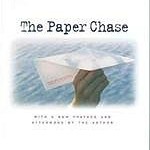You’re a What?
Did you say you’re an American Bar Association (ABA) Law Student Division (LSD) Liaison? What exactly is that? First of all, I have to admit that as of February 1 of this year I had only the vaguest idea what the ABA even was. I had no idea the ABA had a Law Student Division and certainly wasn’t aware that law students had the opportunity to be liaisons to the various sections, divisions, and standing committees of this national organization. I am happy to say I have learned a lot about the ABA in the past seven months.
I began my law school career in the fall of 2007 as a part-time evening student. As is true of most part-time students, my law school experience consisted of attending classes at night when most of the faculty, staff and full-time students are gone for the day. I was fortunate to be able to attend an occasional talk over the lunch hour because I worked on campus, but otherwise law school consisted of going to class and doing homework . . . and managing to get to “bar review” a few times during the semester.


